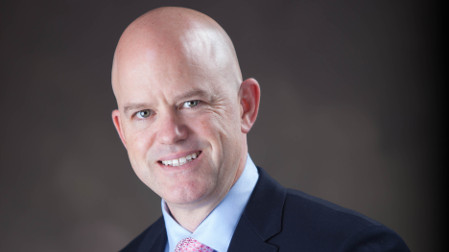NAB’s Matheny Testifies to Senate on Emergency Alerting
WASHINGTON—NAB’s Sam Matheny testified to the U.S. Senate that broadcasters are “the backbone of the Emergency Alert System,” during a hearing on Thursday, Jan. 25, that took a direct look at policy concerns around the use and effectiveness of Emergency Alert Systems. “This is Not a Drill: An Examination of Emergency Alert Systems,” sought answers on Wireless Emergency Alerts and recent failures, most notably the Hawaii false alarm of an impending missile attack. Matheny, NAB’s executive vice president and chief technology officer, was one of the witnesses brought in to provide testimony and answer additional questions from senators.

Sam Matheny
In his testimony, Matheny said that broadcasters take their responsibility as a source for news and emergency updates seriously and that in some situations broadcasters may be the only available communications medium if wireless networks fail.
“Because broadcasting plays such an important role in this critical communications infrastructure, it is vital that the government support and foster broadcasting,” Matheny stressed in his testimony.
He provided three areas that he believed should be of focus for the government in improving broadcasters’ EAS capabilities: The need to support the deployment of ATSC 3.0; support and passage of the Viewer and Listener Protection Act to ensure that TV and radio stations that provide emergency alerts are not pushed off air as part of the ongoing repack process; and that Apple be encouraged to activate the FM tuner in future models of its iPhone as other wireless phone manufacturers have to improve people’s access to vital disaster information.
Read Also: 2017 Challenged Broadcasters' Preparedness for Storm Coverage
The committee asked Matheny whether the current estimate of $1.75 billion for repack funding for broadcasters was enough to ensure that stations are not forced off the air and run the risk of not being available in the case of an emergency. Matheny said that he believes there is a “substantial disconnect from what’s available and what is going to be needed.” Matheny agreed with FCC Chairman Ajit Pai that the current funding is not enough and that the real number is going to be around $3 billion.
Get the TV Tech Newsletter
The professional video industry's #1 source for news, trends and product and tech information. Sign up below.
When the issue of the Hawaii false alert was brought up, Matheny was questioned on how the alerts were disseminated. Matheny said that the emergency alerts worked as designed, issuing a text scrawl across television and an audio alert across radio. “The broadcast infrastructure worked,” he said. “The message did get out, unfortunately, in this case it was a mistaken message… that piece of the process (the alert) worked as designed.”
Matheny’s full prepared testimony to the committee is available here.
